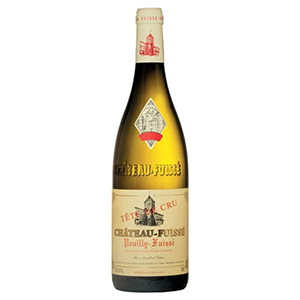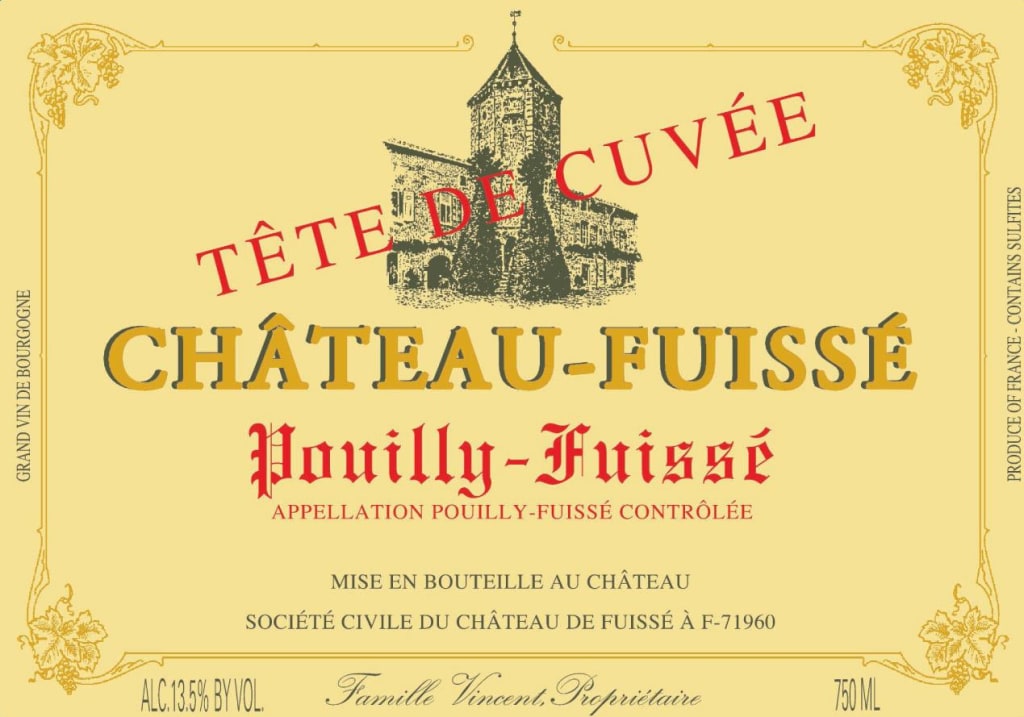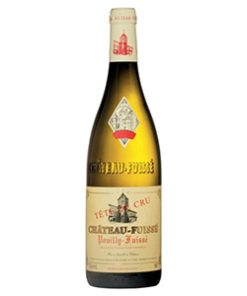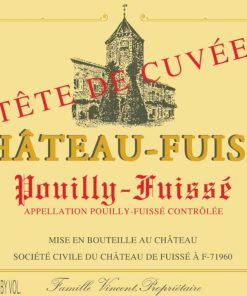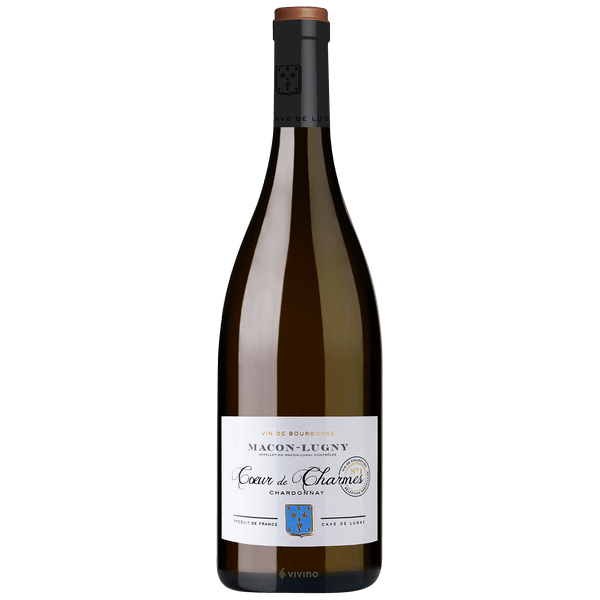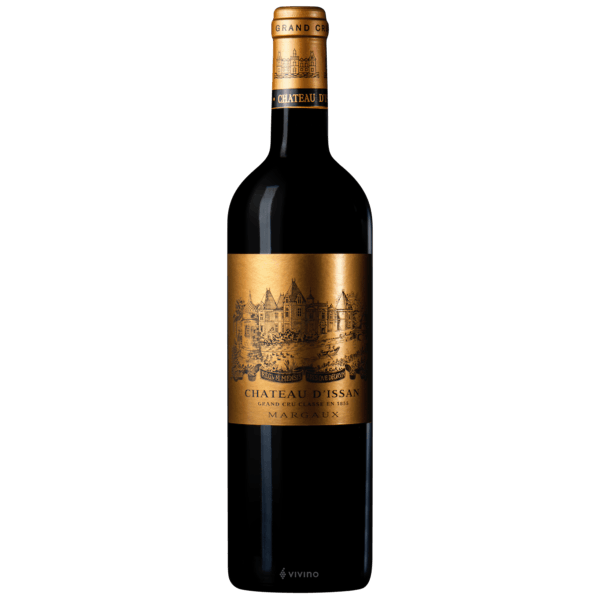2019 Chateau-Fuisse Pouilly-Fuisse Les Combettes
2019 Chateau-Fuisse Pouilly-Fuisse Les Combettes The Les Combettes shows a light yellow color with subtle notes of green. Floral and mineral on the nose, with hints of exotic fruit and ripe apples. On the palate, the attack is full and fresh with aromas of white flowers. Rich on the finish, the chardonnay is fresh, with a crisp minerality and good roundness.
The Vincent family—owner of Château Fuissé for five generations since 1862—assures the continuity of the domaine. Thanks to the transmission of the family’s savoir-faire gained over three centuries, each generation has added land, improved quality and enhanced the worldwide renown of the wines of Château de Fuissé.
Chateau Fuisse
Château Fuissé dates back to 1604 and has been in the Vincent family for five generations. Each generation has added land, increased quality and enhanced the worldwide recognition of the château. Today under direction of Antoine Vincent, Jean-Jacques Vincent’s son, Château Fuissé has reached the pinnacle of quality in the region with its wines rivaling the more famous appellations of Puligny-Montrachet, Chassagne-Montrachet and Meursault to the north.
The most famous vineyards of Les Brûlés, Les Combettes and Le Clos surrounding the château are bottled as specific cuvées to showcase their unique terroir. Presently, both Les Brûlés and Le Clos are in review by the INAO for premiers crus designation. Currently, Mâcon is the lone region in Burgundy lacking even one premier cru. But if one (or more) of the region’s vineyards wins approval, such a designation will be the first-ever premier cru in the Mâconnais.) Château Fuissé also produces quality-driven wines sourced mainly from family-owned properties in the Mâcon under the Vincent Signature label. Each of these wines is produced with the same care and expertise as the domaine bottlings.
Chardonnay
Chardonnay is the world’s most famous white-wine grape and also one of the most widely planted. Although the most highly regarded expressions of the variety are those from Burgundy and California, many high-quality examples are made in Italy, Australia, New Zealand and parts of South America.
Describing the flavors of Chardonnay is not easy. While many Chardonnay wines have high aromatic complexity, this is usually due to winemaking techniques (particularly the use of oak) rather than the variety’s intrinsic qualities. Malolactic fermentation gives distinctive buttery aromas. Fermentation and/or maturation in oak barrels contributes notes of vanilla, smoke and hints of sweet spices such as clove and cinnamon. Extended lees contact while in barrel imparts biscuity, doughy flavors. Because of this high level of winemaker involvement, Chardonnay has become known as the “”winemaker’s wine””.
The variety itself (although often said to be relatively flavor-neutral) is responsible for most of the fruity flavors found in Chardonnay wines. These range from the tropical (banana, melon, pineapple and guava) to stonefruits (peach, nectarine and apricot), citrus and apples.
Climate plays a major role in dictating which fruit flavors a Chardonnay will have. Broadly speaking, warm regions such as California, Chile and much of Australia tend to give more tropical styles. Temperate zones such as southern Burgundy or northern New Zealand create wines marked out by stonefruit notes. The very coolest Chardonnay vineyards (those in Chablis, Champagne and Germany) lean towards green-apple aromas.
Related products
2016 Nicolas Rossignol Volnay 1er Cru Santenots 2016 Nicolas Rossignol Volnay 1er Cru Santenots An extremely ripe yet not premature nose of menthol, plus liqueur and cassis aromas lead to very rich, indeed even opulent medium-bodied flavors that exude an abundance of palate coating dry extract on the velvety, powerful and coffee-infused finish of dramatic [...]
Burgundy
2019 Nicolas Rossignol Volnay 2019 Nicolas Rossignol Volnay is medium to full-bodied with aromas of plums, wild berries, warm spices and licorice, fleshy and layered, with fine concentration, lively acids and an ample core of fruit. Concluding with elegantly chalky grip on the finish, this cuvée has always been one of the more charming and immediate [...]
2020 Jean-Claude Bachelet Saint-Aubin 1er Cru Blanc 2020 Jean-Claude Bachelet Saint-Aubin 1er Cru Blanc Aromas of sweet orchard fruit, dried white flowers, beeswax and freshly baked bread preface the 2020 Saint-Aubin 1er Cru Charmois, a medium to full-bodied, satiny and precise wine with a bright core of fruit, lively acids and a long, saline finish. [...]
2020 Domaine des Lambrays Clos des Lambrays Grand Cru 2020 Domaine des Lambrays Clos des Lambrays Grand Cru, A fresh red, with black currant and black cherry flavors shaded by floral, iron, earth and spice elements. Fluid and on the elegant side, with a solid underlying framework of tannins. Turns a bit leaner on the [...]
 2021 Sartarelli Tralivio Verdicchio dei Casteli di Jesi Classico Superiore
2021 Sartarelli Tralivio Verdicchio dei Casteli di Jesi Classico Superiore 